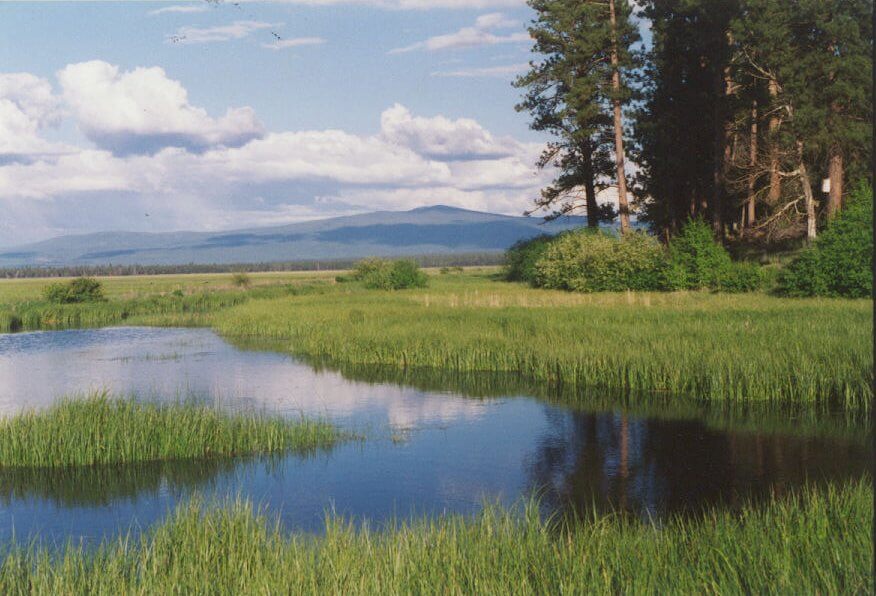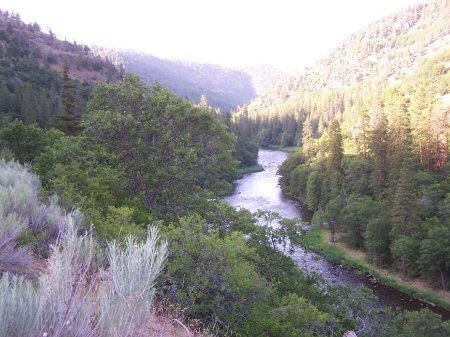Klamath Basin
To restore the Everglades of the West, WaterWatch advocates to bring the demand for water back into balance with what nature can provide for the fish, wildlife, and people who depend on the Klamath’s aquatic resources.
Restoring the Klamath Basin
An immense drainage basin at over 15,750 square miles in size, most of the Klamath Basin lies in California, but 35 percent of the basin is located in Oregon’s Klamath, Lake, and Jackson counties, often called the “Everglades of the West,” with six spectacular National Wildlife Refuges making up some of the most biodiverse wetland areas of the state.
Hundreds of thousands of migratory birds rely on the basin’s wetlands, and large numbers of bald eagles forage in the basin during the winter months.
Historically, the Klamath Basin has supported:
- Massive concentrations of waterfowl, quite possibly the largest on the planet.
- The third-largest salmon runs in the western United States, behind only the Columbia and Sacramento rivers.
- Large populations of Pacific lamprey, a unique species of “sucker fish” found nowhere else.

Klamath Marsh National Wildlife Refuge

Klamath River
While Klamath salmon runs support tribal, commercial, and recreational fishing communities, large water withdrawals for irrigation, commercial agriculture on the National Wildlife Refuges, loss of basin wetlands, and a series of dams on the Klamath River in California — now in the process of being removed after a decades-long campaign — have depleted the basin’s resources.
Nevertheless, despite the loss of habitat, the Klamath offers what may be the best opportunity on the west coast to restore a major river basin.
To restore the Klamath, WaterWatch is working to:
- Bring demand for water back into balance with what nature can provide in the basin.
- Ensure sufficient water for fish, wildlife, wetlands, and the National Wildlife Refuges in the basin.
- Phase out commercial farming on 22,000 acres of Tule Lake and Lower Klamath National Wildlife Refuges.
- Remain engaged on the ongoing removal PacifiCorp’s lower hydropower dams on the Klamath River. One dam has been removed, with three slated to be demolished in 2024.
- Increase legal compliance and agency accountability on water allocation and other management decisions that affect aquatic habitat.
Ongoing Work
Dam Removal
On the Klamath, a Surprising Win for River Advocates (High Country News, Feb. 5, 2016) Dam removals on the Oregon-California border move forward without expensive and lopsided water deals for irrigators.
WaterWatch Welcomes Advance of Klamath Dam Removal (Feb, 2, 2016) Oregon and California’s elected leaders and the Obama Administration have prioritized an agreement to remove the four lower Klamath River dams. The long-delayed restoration effort will no longer be held hostage to a failed water agreement in Congress.
WaterWatch Guest Opinion: A Realistic Path Forward for the Klamath Basin (Bend Bulletin, Dec. 27, 2015)
WaterWatch Comments on Klamath Facilities Removal Draft Environmental Impact Statement (Dec. 29, 2011)
Water Settlement Agreements and Legislation
WaterWatch Guest Opinion: Senators Put Pork Before Klamath Basin Water (Eugene Register-Guard, Feb. 27, 2016)
WaterWatch Guest Opinion: Time to Acknowledge KBRA Isn’t a Solution (Two Rivers Tribune, July 28, 2015)
WaterWatch Guest Opinion: “Make-Believe Water” Bill Would Be Disaster for Klamath (Eugene Register-Guard, July 11, 2015)
WaterWatch Guest Opinion: Klamath Basin Proposal Bad for Taxpayers (The Oregonian, Dec. 6, 2014)
WaterWatch Op/Ed: Questions Persist Despite Klamath Agreements (Salem Statesman Journal, Nov. 29, 2014)
WaterWatch testimony before the U.S. Senate Committee on Energy and Natural Resources June 20, 2013, hearing on water resources issues in the Klamath River Basin (watch the hearing here)
Klamath Irrigation Pumping Subsidy
Oregon Public Utility Commission Orders, UE 170 and 171:
Transitional Rates Established for Klamath Basin Irrigators (April 6, 2006)
Rate Standard Established (Nov. 8, 2005)
Motion for Summary Judgment Dismissed (June 6, 2005)
Reports:
Energy Pricing and Irrigated Agriculture in the Upper Klamath Basin by Dr. William Jaeger (Oregon State University, 2004)
Fish Kills
Klamath River Basin Hydrologic Conditions Prior to the September 2002 Die-Off of Salmon and Steelhead. USGS (2003)
Hydrology, Groundwater and Water Management
OWRD’s Klamath River Basin Adjudication Webpage
WaterWatch Comments on Draft Rules for Regulation of Groundwater in the Klamath Off-Project area (OAR 690-25-0010) (March 2, 2015)
Ground-Water Hydrology of the Upper Klamath Basin, Oregon and California (USGS, April 2010)
Assessment of the Klamath Project Pilot Water Bank: A Review from a Hydrologic Perspective (USGS, 2005)
National Wildlife Refuges
Klamath Advocates Go To Court Over Wildlife Mismanagement (Jan. 18, 2017)
WaterWatch and our conservation allies have filed litigation in federal court against the U.S. Fish and Wildlife Service for failure to follow federal law in the creation of the Comprehensive Conservation Plan for the Klamath Basin National Wildlife Refuge Complex.
WaterWatch, Allies Request Emergency Water for Parched Klamath Basin Wetlands (Oct. 13, 2016)
Seventeen organizations have asked Interior Secretary Jewell to deliver the water Lower Klamath National National Wildlife Refuge is legally entitled to in order to support fall migration on the Pacific Flyway, and reduce the risk of lethal disease outbreaks.
Office of the Inspector General, U.S. Dept. of Interior’s Audit of the Bureau of Reclamation’s Klamath Basin Water User Mitigation Program (Oct. 11, 2016)
Report finds $32 million in taxpayer funds intended to boost water supplies for Klamath fish and wildlife instead went primarily to irrigators.
WaterWatch and Portland Audubon Guest Opinion: Wyden Legislation is Not What Klamath Refuges Need (The Oregonian, June 27, 2015)
Judge Affirms Ruling Favoring Wildlife on Klamath Refuges (April 16, 2015)
In a victory for the Klamath’s migratory waterfowl and other wildlife, a U.S. District Judge ordered the U.S. Fish and Wildlife Service (USFWS) to complete the long overdue “Comprehensive Conservation Plan” for Lower Klamath and Tule Lake National Wildlife Refuges. These plans require the USFWS to ensure commercial activities on refuge lands do not harm wildlife.
Opportunities for Improving Water Supply Reliability for Wildlife Habitat on the Tule Lake and Lower Klamath National Wildlife Refuges (May 2014)
Goldinwater Consulting report, commissioned by WaterWatch of Oregon
WaterWatch Comments on Klamath Basin National Wildlife Refuge Complex Comprehensive Conservation Plan (May 11, 2010)
Refuges in Peril: Fish, Wildlife, and the Klamath Water Crisis (April 2004)
A joint report by WaterWatch of Oregon, The Wilderness Society, Oregon Wild and Earthjustice
